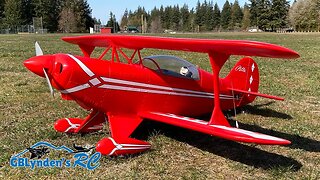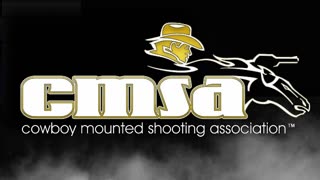Parkzone F4U-1A Corsair Parkflyer WWII Warbird RC Plane Unboxing, Maiden Flight, and Flight Review
This Parkzone F4U-1A Corsair parkflyer WWII Warbird RC Plane Unboxing, Maiden Flight, and Flight Review video review contains an unboxing, maiden, and review to show what one should expect if they purchase this PNP (Plug-N-Play) RC model. I am very honest and have no bias since I paid for this myself.
The links in this description are affiliate links. They give me a small commission on sales which helps support the channel and keep it independent: https://www.amazon.com/shop/gblyndensrc
This RC Plane Park Flyer is brought to us by RC juggernaut Horizon Hobby. This is also a favorite of many WWII Warbird fans and may be one of the better PZ Parkflyer options they have ever released under their Parkzone brand, though it is debatable if this plane is in fact an upgrade over the previous version for fancy flaps and retracts.
My review notes for the F4U-1A Corsair Parkzone, which is the newest Parkzone F4U Corsair are as follows:
Cons:
- The paint is very fragile
- The bomb drop fasteners are weak
- Landing gear hardware could be better
- It needs a lot of trim out of the box
Pros:
- Nice looking Parkzone Corsair RC plane
- Upgradable
- Flies nice once trimmed
- Takes off on grass with stock landing gear
Takeaway: This is a very nice RC plane in the Parkzone Corsair, but it is not a T-28 Trojan! This plane was flown 100% stock with the exception of flying with a Gforce 2200mAh lipo battery.
Note: This is NOT the Hobbyzone Corsair S with SAFE. That is considered a trainer plane and this was in NOT considered a trainer plane.
Remote Control Planes like this are one of the main reasons why I have become so addicted the hobby. The advent of the BNF (Bind and Fly) and PNP (Plug and Play) makes it easy to become addicted to Horizon Hobby brand products such as Parkzone, E-flight, and Blade. I can fly all of their planes and Heli's with my trusty DX6i 6-channel transmitter radio.
Here is some history on this plane via Wikipedia:
Operational History
The performance of the Vought F4U Corsair was impressive. The F4U-1 was considerably faster than the Grumman F6F Hellcat and only 13 mph (21 km/h) slower than the Republic P-47 Thunderbolt;[28][29][30] all three were powered by the R-2800. But while the P-47 achieved its highest speed at 30,020 feet (9,150 m) with the help of an intercooled turbocharger,[31] the F4U-1 reached its maximum speed at 19,900 ft (6,100 m),[32] and used a mechanically supercharged engine.[33]
The U.S. Navy received its first production F4U-1 on 31 July 1942, but getting it into service proved difficult. The framed "birdcage" style canopy provided inadequate visibility for deck taxiing. Even more seriously, the machine had a nasty tendency to "bounce" on touchdown, which could cause it to miss the arresting hook and slam into the crash barrier, or even go out of control. The long "hose nose" visibility problem and the enormous torque of the Double Wasp engine also created operational problems.
Carrier qualification trials on the escort carrier USS Sangamon, on 25 September 1942, caused the U.S. Navy to release the type to the United States Marine Corps.[34] Early Navy pilots spoke disparagingly of the F4U as the "hog", "hosenose" or "bent-wing widow maker".[35] After all, the U.S. Navy still had the Grumman F6F Hellcat, which did not have the performance of the F4U but was a far better deck landing aircraft. The Marines needed a better fighter than the F4F Wildcat. The type was declared "ready for combat" at the end of 1942, though only qualified to operate from land bases until carrier qualification issues were worked out.[36]
The US Navy did not get into combat with the type until September 1943, and the Royal Navy's FAA would qualify the type for carrier operations first. The U.S. Navy finally accepted the F4U for shipboard operations in April 1944, after the longer oleo strut was fitted, which finally eliminated the tendency to bounce.[40]
The first recorded combat engagement was on 14 February 1943, when Corsairs of VMF-124 under Major Gise assisted P-40s and P-38s in escorting a formation of Consolidated B-24 Liberators on a raid against a Japanese aerodrome at Kahili. Japanese fighters contested the raid and the Americans got the worst of it, with four P-38s, two P-40s, two Corsairs and two Liberators lost. No more than four Japanese Zeros were destroyed. A Corsair was responsible for one of the kills, although this was due to a midair collision.
I am also happy to report that I did not crash on my maiden. That is always a nice feeling, especially when it is being used for an unboxing and review video :)
PS: This one is a cool airplane in a line-up of other cool planes like the WWII Warbirds such as the P-40, P-47, F4F, F4U, and P-51 Mustang Parkzone Warbirds. Hopefully they will add in a P-38 or a B-17 in the near future.
-
 6:44
6:44
GBLynden's RC
6 months agoTim's Modded FMS Pitts V2 1400mm RC Biplane
107 -
 LIVE
LIVE
FusedAegisTV
1 hour agoLOST MY 📱 PHONE IN THE FL OCEAN... 🙃 💔| F IT Max Payne 3 RUMBLE CREATOR HOUSE
847 watching -
 1:18:29
1:18:29
Kim Iversen
4 hours agoThe FIRST Lawsuit Against AstraZeneca Has Now Been Filed. Others May Be On The Way...
13.7K42 -
 32:13
32:13
Alexis Wilkins
7 hours agoBetween the Headlines with ALEXIS WILKINS: Africa, Ukraine Dictator, Biden Judges, Felon Cohen, more
1.15K -
 1:21:37
1:21:37
Roseanne Barr
2 hours agoKevin Sorbo saves America | The Roseanne Barr Podcast #49
17.8K119 -
 4:16:54
4:16:54
TheGetCanceledPodcast
5 hours agoThe GCP Ep 6 | Ryan Bensen Tells Us How UHNI's Stay Rich After Divorce, New Book Release & More
2.55K -
 LIVE
LIVE
Total Horse Channel
1 day ago2024 CMSA National Championship | Friday Night | 8:00 pm EST
271 watching -
 1:38:43
1:38:43
2 MIKES LIVE
4 hours ago#70 2ML Open Mike Friday!
15.2K -
 1:29:24
1:29:24
PudgeTV
3 hours agoRocket League from the Content Creator House | Party Time w Pudge
9.49K6 -
 10:56
10:56
Breaking Points
8 hours agoBREAKING: ICJ Orders Israel To HALT Invasion
12.4K48